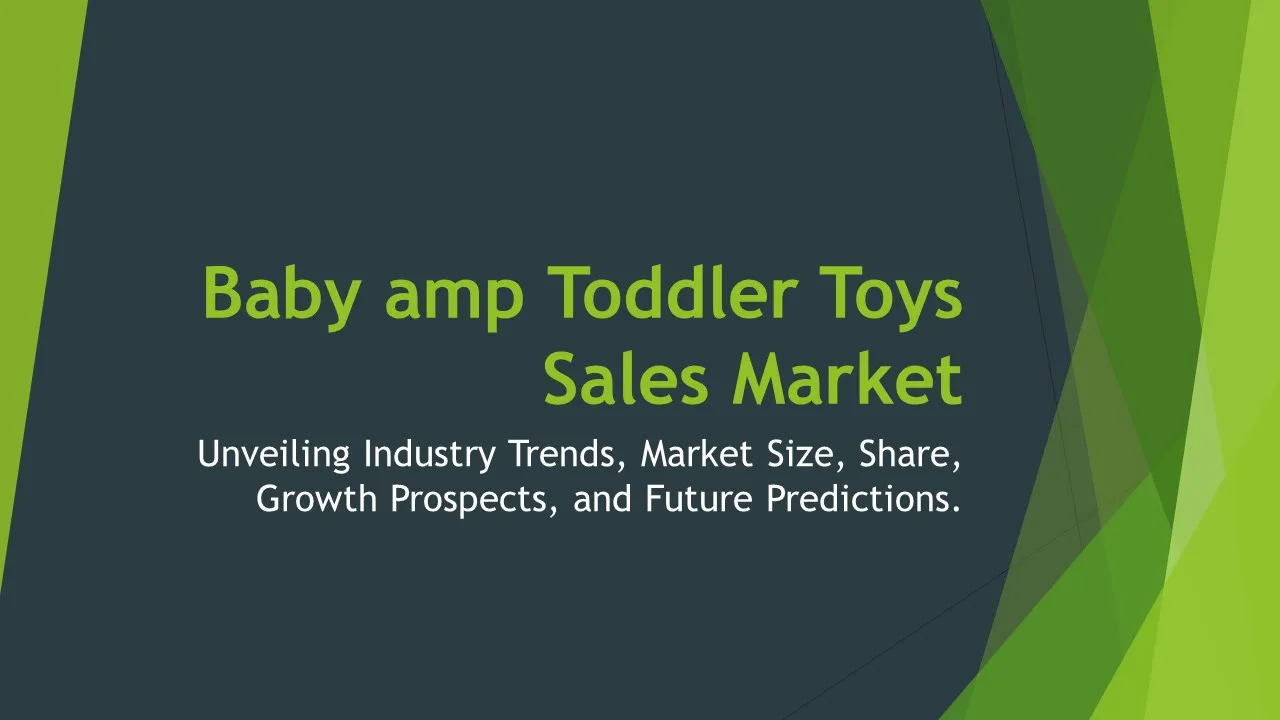Luxury Baby Clothing
Luxury Baby Clothing Market Segments - by Product Type (Organic Baby Clothing, Designer Baby Clothing, Premium Baby Clothing, Customized Baby Clothing, Eco-Friendly Baby Clothing), Application (Online Retail, Specialty Stores, Department Stores, Baby Boutiques, Supermarkets/Hypermarkets), Distribution Channel (Online Stores, Offline Stores), Material Type (Cotton, Silk, Cashmere, Organic Fabrics, Wool), and Region (North America, Europe, Asia Pacific, Latin America, Middle East & Africa) - Global Industry Analysis, Growth, Share, Size, Trends, and Forecast 2025-2035
- Report Preview
- Table Of Content
- Segments
- Methodology
Luxury Baby Clothing Market Outlook
The global luxury baby clothing market is projected to reach approximately USD 11.5 billion by 2035, expanding at a compound annual growth rate (CAGR) of 7.8% throughout the forecast period from 2025 to 2035. The growth of this market can be attributed to several factors including rising disposable incomes, increasing awareness about high-quality baby products, and a growing trend towards gifting premium clothing for newborns. Parents are now more inclined to invest in luxurious items for their babies which enhance comfort, durability, and style. This market trend is further bolstered by the proliferation of online retail platforms that offer a wide range of luxury baby clothing options, making them more accessible to consumers. Additionally, the surge in demand for eco-friendly and organic materials is pushing brands to innovate and provide sustainable yet luxurious alternatives.
Growth Factor of the Market
The luxury baby clothing market is experiencing robust growth driven by several factors. Firstly, the increasing trend of premiumization among consumers, who are now seeking high-quality and stylish clothing items for their infants, is a significant contributor. Additionally, the rise in dual-income households has resulted in increased disposable income, allowing parents to spend more on luxury items. The growing awareness of the benefits of organic and eco-friendly fabrics has also led to a higher demand for sustainable luxury baby apparel. Moreover, targeted marketing strategies and collaborations with celebrity influencers have successfully captured the attention of parents, further enhancing brand visibility and market share. International brands entering emerging markets, particularly in Asia Pacific and Latin America, have also accelerated growth, capitalizing on the increasing purchasing power and changing consumer preferences towards high-end baby products.
Key Highlights of the Market
- Projected growth from USD 11.5 billion by 2035 with a CAGR of 7.8%.
- Increasing trend of premiumization and dual-income households contributing to market growth.
- Growing consumer awareness regarding the benefits of organic and eco-friendly fabrics.
- Influencer marketing and online retail are significantly enhancing brand visibility.
- International expansion into emerging markets is creating new growth opportunities.
By Product Type
Organic Baby Clothing:
Organic baby clothing has witnessed a surge in popularity due to the increasing awareness of sustainable practices among consumers. These garments, made from organic cotton or other natural fibers, are free from harmful chemicals and pesticides, making them a safer choice for sensitive baby skin. Parents are becoming more conscientious about the environmental impact of their purchases, leading to a growing demand for organic options. Furthermore, as more brands enter this market segment, the variety of designs and styles available continues to expand, attracting even more consumers who prioritize both quality and sustainability.
Designer Baby Clothing:
Designer baby clothing represents a niche yet lucrative segment within the luxury baby apparel market. High-end fashion brands are increasingly launching their lines specifically tailored for infants, emphasizing unique designs and superior craftsmanship. Parents are keen on dressing their babies in stylish outfits reminiscent of adult fashion trends, thereby elevating their social status among peers. This segment benefits from high brand loyalty, as consumers often associate designer labels with quality, exclusivity, and a sense of luxury. Seasonal collections and limited-edition releases further fuel consumer interest and demand.
Premium Baby Clothing:
This segment focuses on high-quality baby clothing that offers superior materials, comfort, and durability at competitive prices. Premium brands often position themselves between designer and standard offerings, appealing to parents who desire quality without necessarily choosing high couture. The premium baby clothing segment has seen significant growth thanks to the emphasis placed on the longevity and practicality of products, as well as the increasing willingness of parents to invest in garments that can withstand wear and tear from daily use. This market also sees a trend towards multi-functional clothing that can be worn in various settings, adding value for the consumer.
Customized Baby Clothing:
Customized baby clothing provides parents with the opportunity to personalize garments for their children, making this segment particularly appealing for gifting purposes. Customization options such as monograms, unique prints, or bespoke designs allow parents to create one-of-a-kind pieces. This trend is gaining traction as new technologies enable brands to offer customization more seamlessly, thus meeting the demands of consumers looking for individuality in baby clothing. As this segment evolves, the integration of e-commerce platforms that facilitate easy customization is expected to drive further growth.
Eco-Friendly Baby Clothing:
As environmental consciousness rises among consumers, the demand for eco-friendly baby clothing continues to grow. Brands that utilize sustainable materials such as bamboo, hemp, or recycled fabrics are becoming increasingly popular. This segment caters to parents who are not only concerned about the quality of their baby’s clothing but also about the environmental implications of their purchases. As more brands adopt ethical practices and transparency in their supply chains, eco-friendly baby clothing is expected to gain significant market share in the luxury segment, appealing to environmentally conscious consumers.
By Application
Online Retail:
Online retailing has revolutionized the luxury baby clothing market by providing consumers with unparalleled convenience and variety. The proliferation of e-commerce platforms has enabled brands to reach a broader audience and allows parents to shop from the comfort of their homes. This segment has seen substantial growth as more brands invest in user-friendly websites and mobile applications, enhancing the overall shopping experience. The integration of social media marketing and targeted advertising has also proven effective in attracting potential customers to online stores, leading to increased sales in this channel.
Specialty Stores:
Specialty stores play a crucial role in the luxury baby clothing market by providing curated collections and personalized shopping experiences. These retail outlets typically focus on high-end products, creating an environment where parents can receive expert advice and tailored recommendations. The intimate shopping experience offered by specialty stores allows consumers to touch and feel the quality of the materials, which is a critical factor in purchasing decisions for luxury items. Additionally, these stores often host events and workshops that foster community engagement, further enhancing customer loyalty.
Department Stores:
Department stores have also adapted to the growing demand for luxury baby clothing by dedicating sections to premium brands. These large retail spaces provide consumers with the convenience of one-stop shopping, allowing parents to explore a variety of products under one roof. The department store format also allows for strategic placements of luxury baby clothing alongside other household goods, increasing exposure and potentially driving sales. Seasonal promotions and exclusive product launches further attract customers to department stores, ensuring that they remain competitive in the luxury baby apparel market.
Baby Boutiques:
Baby boutiques represent a specialized retail format that focuses solely on products for infants and young children. These stores often curate a selection of luxury baby clothing from both established and emerging brands, catering to a niche market of discerning parents. The personalized shopping experience offered by boutique retailers allows for in-depth customer interactions, where knowledgeable staff can guide parents through selections based on their preferences. Additionally, baby boutiques often emphasize unique and locally sourced products, appealing to consumers looking for something special for their children.
Supermarkets/Hypermarkets:
While supermarkets and hypermarkets are not traditionally associated with luxury products, many have begun expanding their offerings to include premium baby clothing. This segment capitalizes on the convenience of shopping for everyday goods while also providing options for high-quality baby attire. The competitive pricing and accessibility of these retail formats attract a broad range of consumers, including those who may not typically shop for luxury items. As more families prioritize affordability without compromising on quality, the presence of luxury baby clothing in supermarkets/hypermarkets is likely to continue growing.
By Distribution Channel
Online Stores:
Online stores have significantly transformed the luxury baby clothing market by offering unparalleled accessibility and a vast range of choices. E-commerce platforms allow consumers to browse through extensive collections from the comfort of their homes, making it easier for parents to find the perfect items for their children. The ability to compare prices, read reviews, and access exclusive online deals enhances the shopping experience, while social media marketing further drives traffic to these platforms. As a result, online sales continue to dominate, accounting for a substantial share of the overall luxury baby clothing market.
Offline Stores:
Despite the growing prominence of e-commerce, offline stores continue to play a vital role in the luxury baby clothing market. Physical retail locations offer consumers the opportunity to experience the quality and craftsmanship of products firsthand, which is particularly important when purchasing luxury items. Retailers are focusing on creating inviting shopping environments that foster personalized service, allowing staff to assist customers in making informed choices. Additionally, offline stores often host exclusive events and promotions, driving foot traffic and creating a sense of community around the brand. This segment remains essential for brands aiming to maintain a holistic approach to their sales strategy.
By Material Type
Cotton:
Cotton remains a staple in the luxury baby clothing market due to its natural softness, breathability, and hypoallergenic properties. As a widely preferred fabric among parents, cotton's versatility allows for a wide range of stylish designs and garments, from everyday wear to formal outfits. The demand for organic cotton has surged as parents seek environmentally friendly options that are gentle on the skin. Luxury brands often emphasize the quality of their cotton, ensuring that products last longer while maintaining their softness and integrity after multiple washes.
Silk:
Silk is synonymous with luxury and elegance, making it a sought-after material in the premium baby clothing segment. Its natural sheen and softness provide an exquisite feel against the baby's skin. Silk garments are often used for special occasions or as gifts, appealing to parents looking to dress their children in high-end styles. However, the care and maintenance of silk require careful attention, and many consumers are drawn to brands that offer easy-care options or blends that enhance durability while preserving the luxurious feel of the material.
Cashmere:
Cashmere is another luxurious fabric that has established its niche within the luxury baby clothing market. Known for its unparalleled softness and warmth, cashmere is an ideal choice for colder climates or seasons. Luxury brands that offer cashmere baby clothing often highlight the exclusivity and craftsmanship involved in sourcing and producing these garments. As consumers become more aware of the benefits of cashmere, there is an increasing trend towards investing in high-quality cashmere items that can withstand the test of time, further driving demand in this segment.
Organic Fabrics:
Organic fabrics have gained significant traction in the luxury baby clothing market as parents become more conscious of their children's health and the environmental impact of their purchases. Made from fibers grown without pesticides or synthetic fertilizers, organic fabrics are soft, safe, and sustainable. Brands that prioritize organic materials not only cater to health-conscious consumers but also appeal to those who value ethical production practices. The luxury segment continues to expand its offerings in organic baby clothing, ensuring that parents have access to stylish options that align with their values.
Wool:
Wool is a natural insulator and is often utilized in premium baby clothing for its warmth and breathability. This material is particularly favored for outerwear and accessories, ensuring that babies are warm and comfortable during colder months. Luxury brands that use high-quality wool focus on providing soft, itch-free options that are gentle on a baby's skin. Additionally, the sustainability aspect of wool production is becoming increasingly important for consumers, and brands are responding by ensuring transparency in their sourcing and manufacturing processes.
By Region
The North American luxury baby clothing market is expected to showcase notable growth, driven by the increasing disposable income of families and a growing demand for high-quality products. The region is projected to account for approximately 35% of the global market share by 2035. The presence of various established luxury brands and a well-developed retail infrastructure further bolster this market. Additionally, with the increasing awareness of sustainability, the demand for organic and eco-friendly baby clothing options is driving significant growth in this region. The CAGR for North America is estimated at around 8.0%, reflective of the burgeoning consumer interest in premium baby products.
In Europe, the luxury baby clothing market is anticipated to maintain a steady growth trajectory, contributing roughly 30% to the overall market by 2035. The region is characterized by a rich tradition of high-end fashion and luxury goods, with numerous designer brands launching exclusive baby collections. The European market is also witnessing a shift towards sustainable and ethical brands, as consumers prioritize eco-friendly options. Countries like France, Italy, and the UK are leading the charge in this segment, with a projected CAGR of 7.5% throughout the forecast period. This growth is attributed to the increasing trend of premium gift-giving and heightened awareness of the benefits of luxury baby apparel.
Opportunities
The luxury baby clothing market is brimming with opportunities for growth as more parents embrace the trend of premiumization in children's apparel. Innovative designs and the introduction of limited-edition collections can attract discerning consumers who are willing to pay a premium for exclusive items. Additionally, the rise of online shopping presents a unique opportunity for brands to expand their reach and enhance their visibility. By leveraging social media and influencer partnerships, brands can effectively engage with their target audience, driving online sales and brand loyalty. Moreover, the continuous evolution of e-commerce technology allows for personalized shopping experiences, providing an avenue for brands to differentiate themselves in a competitive marketplace. This alignment with consumer preferences ensures a bright future for luxury baby clothing brands looking to capitalize on these opportunities.
Another significant opportunity lies in the growing consumer preference for sustainable and ethically produced clothing. Brands that embrace eco-friendly practices and materials can significantly enhance their appeal, tapping into the increasingly conscientious consumer base. Innovations in fabric technology, such as the development of biodegradable materials or the use of recycled textiles, can provide brands with a competitive edge. Furthermore, the expanding global middle class, particularly in emerging markets, offers a promising avenue for luxury baby clothing brands to penetrate new demographics. Tailoring offerings to meet local preferences while maintaining a luxurious appeal will be key to success in these burgeoning markets.
Threats
Despite the robust growth of the luxury baby clothing market, several threats could hinder its potential. The primary concern is the increasing competition from both established and emerging brands that could lead to market saturation. As more players enter the luxury baby clothing space, distinguishing oneself from the competition becomes critical. Price wars could emerge, forcing brands to lower their prices and potentially eroding profit margins. Additionally, economic fluctuations, such as recessionary periods or reduced disposable income levels, could impact consumer spending on luxury items. Shifts in consumer preferences towards more affordable alternatives may also pose a threat to the growth of luxury baby clothing segments.
Another significant threat comes from the rapid evolution of consumer preferences in the digital age. Brands that fail to adapt to the changing landscape of online shopping and digital marketing may struggle to maintain relevance. The increasing reliance on social media for brand discovery requires luxury baby clothing companies to invest heavily in digital marketing strategies. Those that do not keep up with trends such as influencer partnerships, personalized advertising, or engaging content may find themselves at a disadvantage. Moreover, any negative publicity or customer dissatisfaction can quickly spread through social media channels, leading to reputational damage that could significantly impact sales.
Competitor Outlook
- Burberry
- Gucci
- Chanel
- Armani
- Fendi
- OshKosh B'Gosh
- Baby Dior
- Bonpoint
- Mini Rodini
- Burt's Bees Baby
- Kate Spade
- Hugo Boss
- Ralph Lauren
- Marc Jacobs
- Petit Bateau
The competitive landscape of the luxury baby clothing market is dynamic, populated by both established fashion houses and emerging boutique brands. Major global players like Burberry and Gucci are leveraging their brand heritage and reputation for quality to capture market share, often introducing exclusive baby lines that reflect their high-fashion ethos. These high-end brands not only focus on aesthetics but also emphasize the use of premium materials, ensuring that their baby clothing meets the highest standards of comfort and durability. Moreover, these brands often engage in innovative marketing strategies that include collaborations with celebrities and influencers, thereby enhancing their appeal to affluent parents looking for prestige in their purchases.
On the other hand, emerging boutique brands are carving their niche by offering unique designs and personalized experiences that cater specifically to modern consumer demands. Brands like Mini Rodini and Burt's Bees Baby focus on sustainable practices, thereby appealing to a growing demographic of eco-conscious consumers. These boutique brands often rely on social media platforms to engage with their audience directly, fostering a community around their brand identity. Their agility allows them to quickly respond to fashion trends and consumer preferences, positioning them effectively in the competitive market. As a result, these new entrants are increasingly challenging established brands to innovate and adapt to meet the evolving needs of consumers.
As the market continues to evolve, it is essential for companies to maintain a keen awareness of changing consumer behaviors and preferences. Major competitors are investing heavily in research and development to create innovative products that resonate with their target audience. For instance, brands like Dolce & Gabbana and Baby Dior are exploring collaborations with renowned designers to introduce exclusive collections that create buzz among consumers. Additionally, strategic partnerships with online retailers are becoming more frequent, allowing these companies to enhance their distribution capabilities and reach a broader customer base. The emphasis on quality, design, and ethical production practices will ultimately define the competitive strategies that prevail in the luxury baby clothing market.
1 Appendix
- 1.1 List of Tables
- 1.2 List of Figures
2 Introduction
- 2.1 Market Definition
- 2.2 Scope of the Report
- 2.3 Study Assumptions
- 2.4 Base Currency & Forecast Periods
3 Market Dynamics
- 3.1 Market Growth Factors
- 3.2 Economic & Global Events
- 3.3 Innovation Trends
- 3.4 Supply Chain Analysis
4 Consumer Behavior
- 4.1 Market Trends
- 4.2 Pricing Analysis
- 4.3 Buyer Insights
5 Key Player Profiles
- 5.1 Fendi
- 5.1.1 Business Overview
- 5.1.2 Products & Services
- 5.1.3 Financials
- 5.1.4 Recent Developments
- 5.1.5 SWOT Analysis
- 5.2 Gucci
- 5.2.1 Business Overview
- 5.2.2 Products & Services
- 5.2.3 Financials
- 5.2.4 Recent Developments
- 5.2.5 SWOT Analysis
- 5.3 Armani
- 5.3.1 Business Overview
- 5.3.2 Products & Services
- 5.3.3 Financials
- 5.3.4 Recent Developments
- 5.3.5 SWOT Analysis
- 5.4 Chanel
- 5.4.1 Business Overview
- 5.4.2 Products & Services
- 5.4.3 Financials
- 5.4.4 Recent Developments
- 5.4.5 SWOT Analysis
- 5.5 Bonpoint
- 5.5.1 Business Overview
- 5.5.2 Products & Services
- 5.5.3 Financials
- 5.5.4 Recent Developments
- 5.5.5 SWOT Analysis
- 5.6 Burberry
- 5.6.1 Business Overview
- 5.6.2 Products & Services
- 5.6.3 Financials
- 5.6.4 Recent Developments
- 5.6.5 SWOT Analysis
- 5.7 Baby Dior
- 5.7.1 Business Overview
- 5.7.2 Products & Services
- 5.7.3 Financials
- 5.7.4 Recent Developments
- 5.7.5 SWOT Analysis
- 5.8 Hugo Boss
- 5.8.1 Business Overview
- 5.8.2 Products & Services
- 5.8.3 Financials
- 5.8.4 Recent Developments
- 5.8.5 SWOT Analysis
- 5.9 Kate Spade
- 5.9.1 Business Overview
- 5.9.2 Products & Services
- 5.9.3 Financials
- 5.9.4 Recent Developments
- 5.9.5 SWOT Analysis
- 5.10 Marc Jacobs
- 5.10.1 Business Overview
- 5.10.2 Products & Services
- 5.10.3 Financials
- 5.10.4 Recent Developments
- 5.10.5 SWOT Analysis
- 5.11 Mini Rodini
- 5.11.1 Business Overview
- 5.11.2 Products & Services
- 5.11.3 Financials
- 5.11.4 Recent Developments
- 5.11.5 SWOT Analysis
- 5.12 Petit Bateau
- 5.12.1 Business Overview
- 5.12.2 Products & Services
- 5.12.3 Financials
- 5.12.4 Recent Developments
- 5.12.5 SWOT Analysis
- 5.13 Ralph Lauren
- 5.13.1 Business Overview
- 5.13.2 Products & Services
- 5.13.3 Financials
- 5.13.4 Recent Developments
- 5.13.5 SWOT Analysis
- 5.14 OshKosh B'Gosh
- 5.14.1 Business Overview
- 5.14.2 Products & Services
- 5.14.3 Financials
- 5.14.4 Recent Developments
- 5.14.5 SWOT Analysis
- 5.15 Burt's Bees Baby
- 5.15.1 Business Overview
- 5.15.2 Products & Services
- 5.15.3 Financials
- 5.15.4 Recent Developments
- 5.15.5 SWOT Analysis
- 5.1 Fendi
6 Market Segmentation
- 6.1 Luxury Baby Clothing Market, By Application
- 6.1.1 Online Retail
- 6.1.2 Specialty Stores
- 6.1.3 Department Stores
- 6.1.4 Baby Boutiques
- 6.1.5 Supermarkets/Hypermarkets
- 6.2 Luxury Baby Clothing Market, By Product Type
- 6.2.1 Organic Baby Clothing
- 6.2.2 Designer Baby Clothing
- 6.2.3 Premium Baby Clothing
- 6.2.4 Customized Baby Clothing
- 6.2.5 Eco-Friendly Baby Clothing
- 6.3 Luxury Baby Clothing Market, By Material Type
- 6.3.1 Cotton
- 6.3.2 Silk
- 6.3.3 Cashmere
- 6.3.4 Organic Fabrics
- 6.3.5 Wool
- 6.4 Luxury Baby Clothing Market, By Distribution Channel
- 6.4.1 Online Stores
- 6.4.2 Offline Stores
- 6.1 Luxury Baby Clothing Market, By Application
7 Competitive Analysis
- 7.1 Key Player Comparison
- 7.2 Market Share Analysis
- 7.3 Investment Trends
- 7.4 SWOT Analysis
8 Research Methodology
- 8.1 Analysis Design
- 8.2 Research Phases
- 8.3 Study Timeline
9 Future Market Outlook
- 9.1 Growth Forecast
- 9.2 Market Evolution
10 Geographical Overview
- 10.1 Europe - Market Analysis
- 10.1.1 By Country
- 10.1.1.1 UK
- 10.1.1.2 France
- 10.1.1.3 Germany
- 10.1.1.4 Spain
- 10.1.1.5 Italy
- 10.1.1 By Country
- 10.2 Asia Pacific - Market Analysis
- 10.2.1 By Country
- 10.2.1.1 India
- 10.2.1.2 China
- 10.2.1.3 Japan
- 10.2.1.4 South Korea
- 10.2.1 By Country
- 10.3 Latin America - Market Analysis
- 10.3.1 By Country
- 10.3.1.1 Brazil
- 10.3.1.2 Argentina
- 10.3.1.3 Mexico
- 10.3.1 By Country
- 10.4 North America - Market Analysis
- 10.4.1 By Country
- 10.4.1.1 USA
- 10.4.1.2 Canada
- 10.4.1 By Country
- 10.5 Luxury Baby Clothing Market by Region
- 10.6 Middle East & Africa - Market Analysis
- 10.6.1 By Country
- 10.6.1.1 Middle East
- 10.6.1.2 Africa
- 10.6.1 By Country
- 10.1 Europe - Market Analysis
11 Global Economic Factors
- 11.1 Inflation Impact
- 11.2 Trade Policies
12 Technology & Innovation
- 12.1 Emerging Technologies
- 12.2 AI & Digital Trends
- 12.3 Patent Research
13 Investment & Market Growth
- 13.1 Funding Trends
- 13.2 Future Market Projections
14 Market Overview & Key Insights
- 14.1 Executive Summary
- 14.2 Key Trends
- 14.3 Market Challenges
- 14.4 Regulatory Landscape
Segments Analyzed in the Report
The global Luxury Baby Clothing market is categorized based on
By Product Type
- Organic Baby Clothing
- Designer Baby Clothing
- Premium Baby Clothing
- Customized Baby Clothing
- Eco-Friendly Baby Clothing
By Application
- Online Retail
- Specialty Stores
- Department Stores
- Baby Boutiques
- Supermarkets/Hypermarkets
By Distribution Channel
- Online Stores
- Offline Stores
By Material Type
- Cotton
- Silk
- Cashmere
- Organic Fabrics
- Wool
By Region
- North America
- Europe
- Asia Pacific
- Latin America
- Middle East & Africa
Key Players
- Burberry
- Gucci
- Chanel
- Armani
- Fendi
- OshKosh B'Gosh
- Baby Dior
- Bonpoint
- Mini Rodini
- Burt's Bees Baby
- Kate Spade
- Hugo Boss
- Ralph Lauren
- Marc Jacobs
- Petit Bateau
- Publish Date : Jan 21 ,2025
- Report ID : CO-23475
- No. Of Pages : 100
- Format : |
- Ratings : 4.5 (110 Reviews)









